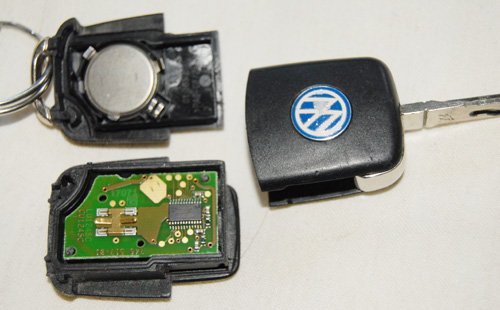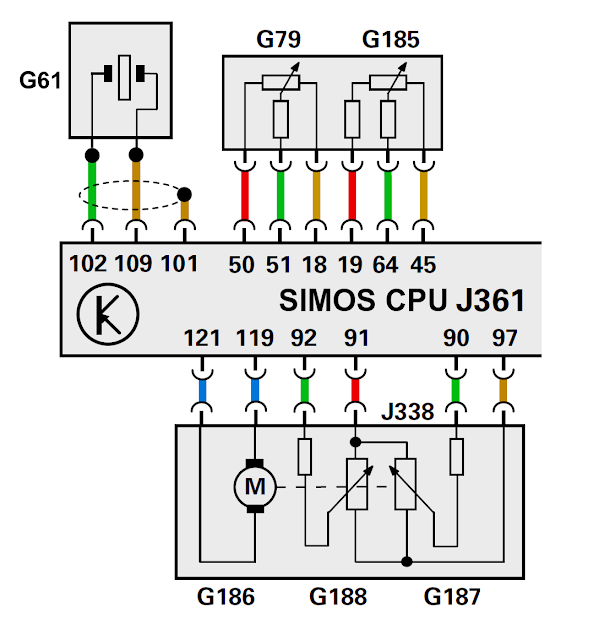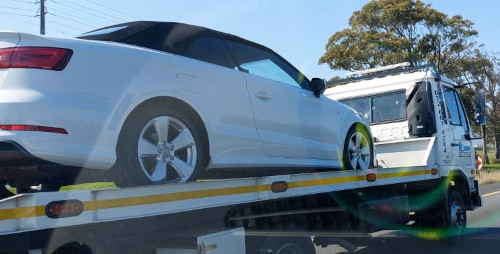VW AND AUDI EPC SOLENOID REPLACEMENT
Its been four months since the accident that triggered both my VW Polo's airbags. Even though damage to the body was slight, my polo has been standing for all this time while repairs were effected. Now that everything is fixed and ready to take the Polo on the road once again, there appeared to be a huge problem. I couldn't select any gears whilst the engine idles because it grinds horribly but was able to select them when the engine is off. I have even selected a gear then turned the ignition, just to see it the clutch and pressure plate engages. After several attempts at grinding every gear, I came to the conclusion it may not be the gearbox that's at fault but perhaps the clutch that is not disengaging from the flywheel sufficiently. So I started the engine and pumped the clutch for a several minutes. Thereafter it started selecting gears with difficulty and after several attempts it was back to normal. I took the Polo on the road and every thing was just great.
 |
| 02E Automatic Transmission EPC Solenoid DSG Gearbox valve body (Electronic Pressure Control) solenoid |
A 02E transmission scan came up with the following data:-
Address 02: Auto Trans Labels: 09G-927-750.LBL
Control Module Part Number: 09G 927 750 HJ HW: 09G 927 750 CJ
Component and/or Version: AQ 250 6F 1068
Software Coding: 0000072
Work Shop Code: WSC 31414 000 00000
4 Faults Found:
17104 - Transmission Output Speed Sensor (G195): Circuit Malfunction
P0720 - 012 - Electrical Fault in Circuit - MIL ON
Freeze Frame:
Fault Status: 10101100
Fault Priority: 2
Fault Frequency: 1
Reset counter: 44
Mileage: 104552 km
Time Indication: 0
Date: 2010.10.19
Time: 16:39:08
17099 - Transmission Input Speed Sensor (G182): Circuit Malfunction
P0715 - 012 - Electrical Fault in Circuit - MIL ON
Freeze Frame:
Fault Status: 10101100
Fault Priority: 2
Fault Frequency: 1
Reset counter: 39
Mileage: 41353 km
Time Indication: 0
Date: 2015.08.08
Time: 00:00:00
17094 - Transmission Fluid Temp.Sensor (G93), Circuit Malfunction
P0710 - 010 - Open or Short to Plus - Intermittent
Freeze Frame:
Fault Status: 00101010
Fault Priority: 2
Fault Frequency: 1
Reset counter: 184
Mileage: 41353 km
Time Indication: 0
Date: 2015.08.08
Time: 00:00:00
01680 - ABS Wheel Speed Signal; Front Right
013 - Check DTC Memory
Freeze Frame:
Fault Status: 00101101
Fault Priority: 2
Fault Frequency: 7
Reset counter: 201
Mileage: 41353 km
Time Indication: 0
Date: 2015.08.08
Time: 00:00:00
The transmission gets a speed signal from the front right side wheel which is needed by the TCM to determine the speed of the car and when it should change gears hence there is an ABS fault listed above. After stripping the valve body, he found that the transmission oil looked like there was water in it, a sort of milky grey instead of reddish translucent. It turned out that the previous owner never bothered to replace the transmission oil at all. There were iron fillings attached to the magnets in the sump and some black plastic bits from the solenoid plugs could be seen in the oil, liquidized by the gears. This most likely caused solenoid EPC (electronic pressure control) solenoid to seize, preventing it from moving when pulsed because it caked-up around the plunger. In fact the entire loom was so brittle when it was unplugged that it just disintegrated into crumbs. Considering that the engine is attached to the transmission, both of which produce tremendous heat which virtually "cooks" the transmission oil at 40 degrees C. Its no wonder the transmission harness is overcooked hard and brittle because it lies in this hot oil. It's also very surprising that VAG cars with DSG transmissions aren't more trouble some than they already are, because the electronic mechatronic unit sits inside the gearbox. As bad luck would have it, Aron's Jetta's mechatronic device was fried and needed to be replaced along with the internal harness. No electronic component other than "military spec electronic components" was designed to withstand of survive such huge amount of heat.
Anyway, the EPC (Electronic Pressure Control) solenoid was replaced after the valve body tunnels was cleaned with a rifle cleaning wire brush and reassembled. Two more rubber seals on two other solenoids were also replaced and as mentioned earlier, the mechatronic unit and the internal harness.














